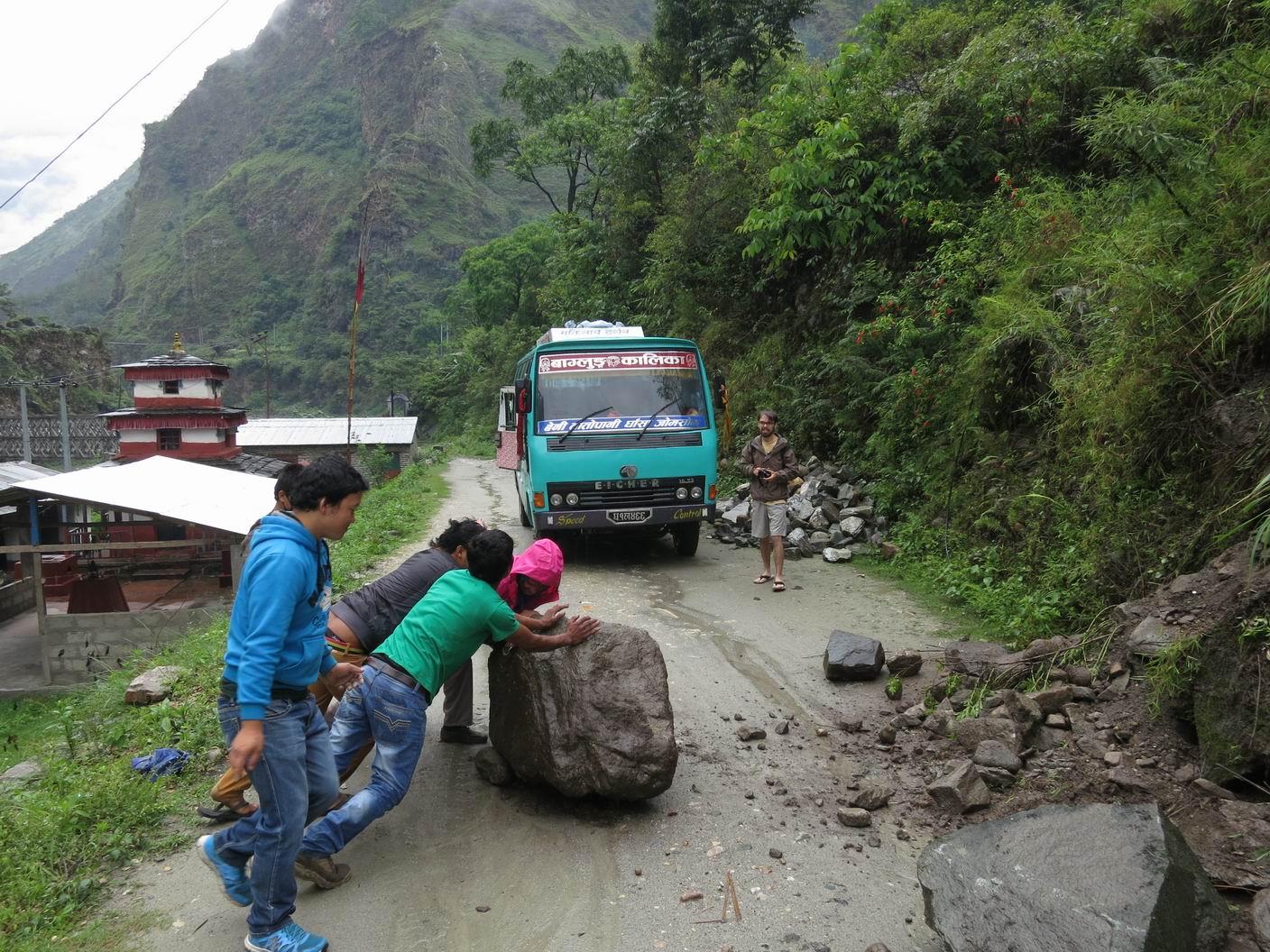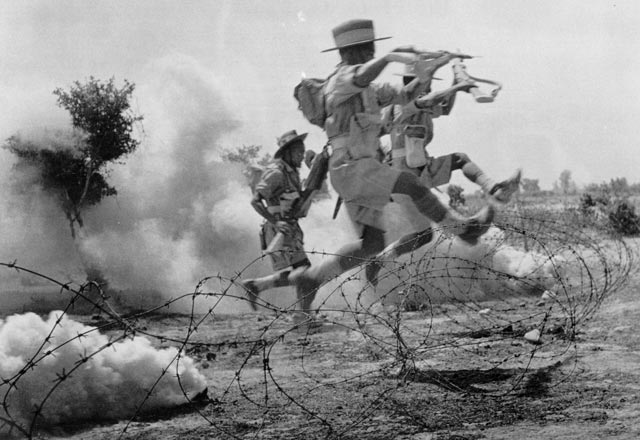The second week in Nepal I took a bus trip out of Kathmandu. The route wound its way over high passes, then dropped into valleys where sheer mountainsides fell off into raging rivers.
We passed through what is called the "mid-hills region." With the great Himalaya Range to the north, the steamy lowlands to the south, in many ways this is the beating heart of Nepal. And this heartbeat, shall we say, can be a little irregular. In fact, I alternated between being awestruck at the scenery and outright terrified. It took me two days to recover from the pounding, it was so rough.
(A lot of the roughness was caused by re-building of roads, I was told, and should be alleviated in coming years as those projects wrap-up.)
(A lot of the roughness was caused by re-building of roads, I was told, and should be alleviated in coming years as those projects wrap-up.)
 |
| A rest stop was needed about here anyhow. |
We
stopped off at the city of Gorkha. The tribal peoples there are famous
as warriors and have been recruited by the British for two centuries as
mercenaries. Living at the altitudes that they do, they
have fantastic endurance and make great soldiers. Something in the genes, I'm told. Their austere upbringing in the hills and the way of life there has much to do with it as well.
The Royal Gurkha Rifles, as they're known in the U.K. Some of the Queen's own. And their trademark curved knives, the khukuris, kind of a cross between a Bowie knife and a machete.
 |
| Nepalese Rangers, similar to Gurkha Rifles. Note trademark cocking of the hats. |
 |
| ...and khukuri knives on waist belts. |
| A khukuri (smaller knives are for sharpening). |
Beyond their prowess as a military unit, the Gurkha Rifles bespeak something larger about Nepal, one of the poorest countries in the world, and the lack of economic opportunity there.
I set out on a hike one day from a village in this middle hills region. Descending a stone pathway, I was passed by a teenager laboring under a wicker basket. He was panting hard and soaked with sweat. Peering down into the basket, I could see only rocks and sand therein, a heavy lot of it.
"What are you going to do with that?" I asked. "Build something? Building materials?"
"Oh no," he said. "I'm in training for the Rifles, the Gurkha Rifles. Tryouts are coming up and I need to be ready."
 |
| The Gurkha Rifle wanna-be. Note head-strap for his basket. |
 |
| And there he goes! Back up the hill once again. |
He went on to explain that being selected for the Rifles was not just a job, it was pay and benefits, a pension afterwards, and you awarded citizenship in the United Kingdom, able to live in any of the Commonwealth countries -- Canada, Australia, New Zealand, etc.
"It's not just for me," he went on, "for my family. We don't have that much. And you get to be a Rifle...My Uncle was a Rifle", he smiled, a smile imbued with much pride. And pride has a lot to do with it, I learned, pride for him, pride for his family, even for his village. They would all hold their heads higher, should he make it.
I tried to compliment him on his speaking of English, which was also part of his preparation for the tryouts with the British. But I found myself talking into thin air -- he had turned and was running back up that hill, continuing his training.
Quite simply, being selected for the Rifles is an avenue of opportunity for young people in Nepal, a way out of the poverty into which many of them are born. The British come every year and hold try-outs in cities about the country. But it's a tough road -- only two hundred or so are chosen by the Brits all told, while twenty-some thousand show up for the tryouts.
In the last few years even more show up because the British are now accepting women into the ranks, to be used in various non-combat roles. And I saw young women in training here and there about Nepal as well.
In the last few years even more show up because the British are now accepting women into the ranks, to be used in various non-combat roles. And I saw young women in training here and there about Nepal as well.
The Gurkha bravery and ferocity in battle are the stuff of legend, and a lot of it can be learned at the Museum of the Gurkha Rifles in Pokhara, Nepal...
 |
| The museum. |
 |
| Standing inspection during World War II as part of the British Army. |
 |
| Gurkhas in training circa 1942. |
In a sense, acceptance into the Rifles is a type of guest worker program for Nepalis. Besides the military, many of them "go off" to construction and service jobs throughout that part of the world. For a family member to work in another country for six months, then return home for six months is part of life for many families in Nepal. And when a member does return home, he's often feted like a conquering hero.
However, because of the warrior heritage of many of Nepal's hill peoples, none of these other jobs has the benefits or the prestige of being one of the famous Rifles. The motto of the Royal Gurkha Brigade speaks volumes:
Better To Stand And Die Than Be A Coward
Despite that we spoke for only a few minutes on that stone walkway that day, here it is weeks later and I find myself hoping that that kid made it!
[PART THREE TO FOLLOW NEXT WEEK]







No comments:
Post a Comment